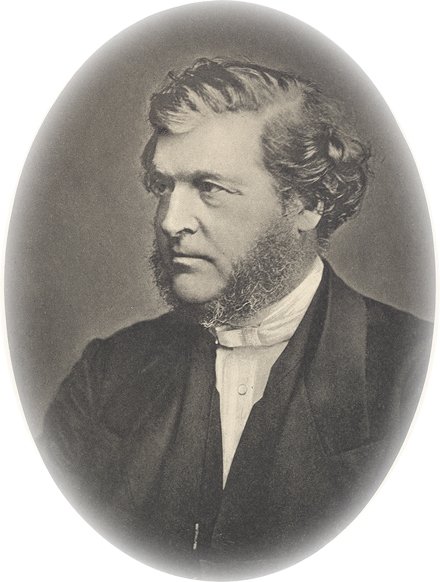Dr. Rainy speaks
Dr. Langdon and his friend Sir Leigh Teabing have a very... interesting view of the formation of the Canon of the New Testament. By 'interesting' I mean it's nonsense, as any of my students will tell you. The idea that any Church Council sat down and decided which documents should go in the New Testament is laughable. The idea that "The Bible, as we know it today, was collated by the pagan Roman emperor Constantine the Great," [Da Vinci Code P. 313 - H.H.] is quite impossible. You see, until the time of Constantine, the Christian Church had been being persecuted by the Roman empire. The Church leaders, many of them Bishops bearing the marks of torture, were not going to capitulate to a radical re-writing of their Bible by the Emperor any more than our Scots Covenanters of the 17th Century were going to meekly capitulate to King Charles II or James VII.
The canon of the New Testament was complete before Nicea, as was the canon of the Old Testament. All that Nicea did was what the Westminster Assembly did - they recognised the Bible already in the possession of the Church.
Teabing says that our four Gospels were those that emphasised the divinity of Christ, and contrasts them with those 'gospels' that spoke of His humanity. The trouble is that our four Gospels speak of a Jesus who is born (as a man), who has to grow up (Luke 2.52), who is hungry (Luke 4.2), who is so tired that he sleeps in the middle of a tempest (Mark 4.38), who is "wearied with his journey" (John 4.6), and who, of course, dies. The Christian tradition is of Christ as the Theanthropic person, the person who is both God and man. The Gnostic Gospels of which Teabing is so fond, however, fail here. The Gnostic Jesus is not a true man. The Apocalypse of Peter describes a 'Jesus' who is a man indwelt by an 'Aeon' (Gnostic higher being) that left him before the cross. The Second Treatise of the Great Seth says that 'Simon' was substituted for Jesus; the Acts of John is the most telling of these Gnostic documents, in it Jesus is presented as only seeming to be human. This heresy, called Docetism from the Greek dokeo (I seem to be), was common among the Gnostics, who believed matter to be intrinsically bad.
And this is perhaps the place to address Dr. Langdon's claim that 'heretic' is derived from the Latin word haereticus, meaing 'choice'. It doesn't. For one thing, 'airetiko is Greek, not Latin. It means 'party', and is used in the New Testament itself, in Titus 3.10. It is also found in classical Greek literature, with the same meaning. It refers to those who set up parties or factions and therefore divide the Church. It therefore had reference to those who 'chose' the other 'gospels' not for the reason Dr. Langdon gives, but because they were dividing the Church.
I tell my students to read F.F. Bruce's book The Books and the Parchments to look into this matter in greater depth.
The canon of the New Testament was complete before Nicea, as was the canon of the Old Testament. All that Nicea did was what the Westminster Assembly did - they recognised the Bible already in the possession of the Church.
Teabing says that our four Gospels were those that emphasised the divinity of Christ, and contrasts them with those 'gospels' that spoke of His humanity. The trouble is that our four Gospels speak of a Jesus who is born (as a man), who has to grow up (Luke 2.52), who is hungry (Luke 4.2), who is so tired that he sleeps in the middle of a tempest (Mark 4.38), who is "wearied with his journey" (John 4.6), and who, of course, dies. The Christian tradition is of Christ as the Theanthropic person, the person who is both God and man. The Gnostic Gospels of which Teabing is so fond, however, fail here. The Gnostic Jesus is not a true man. The Apocalypse of Peter describes a 'Jesus' who is a man indwelt by an 'Aeon' (Gnostic higher being) that left him before the cross. The Second Treatise of the Great Seth says that 'Simon' was substituted for Jesus; the Acts of John is the most telling of these Gnostic documents, in it Jesus is presented as only seeming to be human. This heresy, called Docetism from the Greek dokeo (I seem to be), was common among the Gnostics, who believed matter to be intrinsically bad.
And this is perhaps the place to address Dr. Langdon's claim that 'heretic' is derived from the Latin word haereticus, meaing 'choice'. It doesn't. For one thing, 'airetiko is Greek, not Latin. It means 'party', and is used in the New Testament itself, in Titus 3.10. It is also found in classical Greek literature, with the same meaning. It refers to those who set up parties or factions and therefore divide the Church. It therefore had reference to those who 'chose' the other 'gospels' not for the reason Dr. Langdon gives, but because they were dividing the Church.
I tell my students to read F.F. Bruce's book The Books and the Parchments to look into this matter in greater depth.

0 Comments:
Post a Comment
<< Home